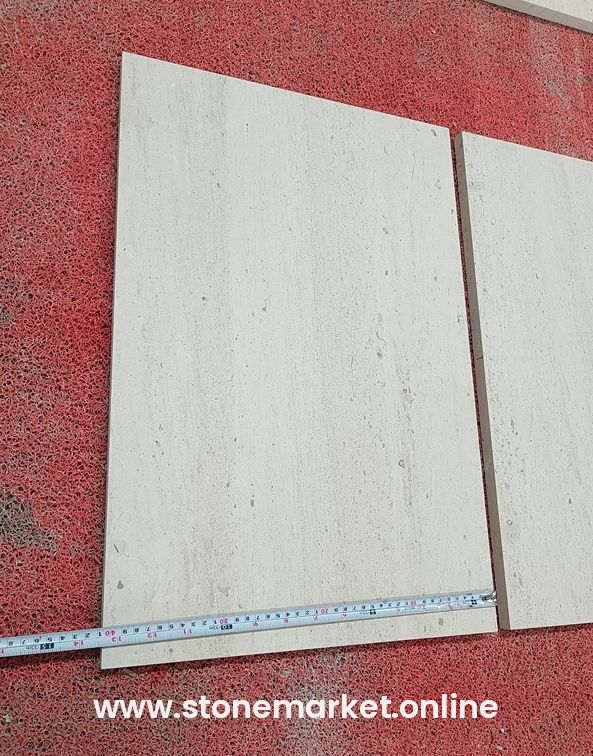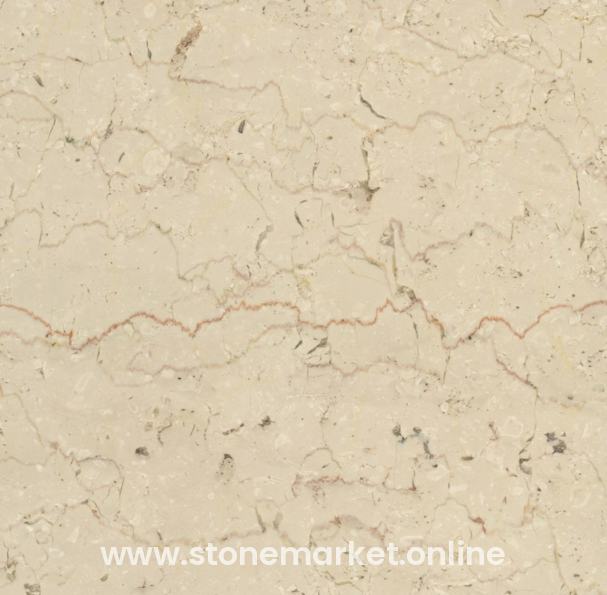Home /Stone library
Riyadh Stone
 Saudi Arabia
((Jabal Tuwayq, Riyadh))
Saudi Arabia
((Jabal Tuwayq, Riyadh))
Riyadh Stone, also known as Riyadh Limestone, is a natural stone commonly found in the Riyadh region of Saudi Arabia. It is a type of limestone that is highly valued for its durability, attractive appearance, and versatility in various construction and decorative applications.
Quarrying Riyadh Stone involves extracting large blocks or slabs of the limestone from quarries in the Riyadh area. The stone is formed over millions of years through the accumulation of marine organisms and sedimentation processes, resulting in a compact and solid composition.
Riyadh Stone exhibits a light beige to cream color, which is often characterized by subtle variations and patterns, including occasional fossilized remains. The stone's neutral tone allows it to complement a wide range of architectural styles and color schemes, making it a popular choice for both traditional and contemporary designs.
Due to its natural characteristics and aesthetic appeal, Riyadh Stone is utilized in numerous applications. It is commonly used for exterior cladding of buildings, including facades and walls, giving structures a timeless and elegant appearance. The stone is also used in interior applications such as flooring, wall cladding, and fireplace surrounds, adding warmth and texture to living spaces.
Riyadh Stone is highly regarded for its durability and weather resistance. It can withstand the harsh climatic conditions of the region, including extreme heat, sandstorms, and temperature fluctuations. The stone's density and strength make it resistant to wear, ensuring its longevity and minimal maintenance requirements.
One notable feature of Riyadh Stone is its ability to keep buildings cool in hot climates. Its light color reflects sunlight and reduces the absorption of heat, contributing to energy efficiency and thermal comfort in buildings.
The use of Riyadh Stone extends beyond residential and commercial projects. It is also employed in landscaping and outdoor design applications, including pathways, garden features, and decorative elements. Its natural beauty and durability make it an ideal choice for creating harmonious and visually appealing outdoor environments.
It is worth mentioning that Riyadh Stone may vary in appearance due to the natural characteristics of limestone. Color tones, patterns, and fossilized remains can differ from one piece to another. It is recommended to consult with suppliers and view samples to ensure that the specific Riyadh Stone selected aligns with the desired aesthetic and project requirements.
In summary, Riyadh Stone is a natural limestone quarried in the Riyadh region of Saudi Arabia. Its light beige to cream color, durability, and versatility make it a popular choice for various construction and decorative applications. With its timeless appearance and ability to withstand harsh climates, Riyadh Stone contributes to the aesthetic and functional aspects of architectural projects in the region.
Riyadh Stone
Beige- Limestone
 Saudi Arabia
Saudi Arabia
Riyadh Stone, also known as Riyadh Limestone, is a natural stone commonly found in the Riyadh region of Saudi Arabia. It is a type of limestone that is highly valued for its durability, attractive appearance, and versatility in various construction and decorative applications.
Quarrying Riyadh Stone involves extracting large blocks or slabs of the limestone from quarries in the Riyadh area. The stone is formed over millions of years through the accumulation of marine organisms and sedimentation processes, resulting in a compact and solid composition.
Riyadh Stone exhibits a light beige to cream color, which is often characterized by subtle variations and patterns, including occasional fossilized remains. The stone's neutral tone allows it to complement a wide range of architectural styles and color schemes, making it a popular choice for both traditional and contemporary designs.
Due to its natural characteristics and aesthetic appeal, Riyadh Stone is utilized in numerous applications. It is commonly used for exterior cladding of buildings, including facades and walls, giving structures a timeless and elegant appearance. The stone is also used in interior applications such as flooring, wall cladding, and fireplace surrounds, adding warmth and texture to living spaces.
Riyadh Stone is highly regarded for its durability and weather resistance. It can withstand the harsh climatic conditions of the region, including extreme heat, sandstorms, and temperature fluctuations. The stone's density and strength make it resistant to wear, ensuring its longevity and minimal maintenance requirements.
One notable feature of Riyadh Stone is its ability to keep buildings cool in hot climates. Its light color reflects sunlight and reduces the absorption of heat, contributing to energy efficiency and thermal comfort in buildings.
The use of Riyadh Stone extends beyond residential and commercial projects. It is also employed in landscaping and outdoor design applications, including pathways, garden features, and decorative elements. Its natural beauty and durability make it an ideal choice for creating harmonious and visually appealing outdoor environments.
It is worth mentioning that Riyadh Stone may vary in appearance due to the natural characteristics of limestone. Color tones, patterns, and fossilized remains can differ from one piece to another. It is recommended to consult with suppliers and view samples to ensure that the specific Riyadh Stone selected aligns with the desired aesthetic and project requirements.
In summary, Riyadh Stone is a natural limestone quarried in the Riyadh region of Saudi Arabia. Its light beige to cream color, durability, and versatility make it a popular choice for various construction and decorative applications. With its timeless appearance and ability to withstand harsh climates, Riyadh Stone contributes to the aesthetic and functional aspects of architectural projects in the region.


 China
China








 Viet Nam
Viet Nam

 Italy
Italy